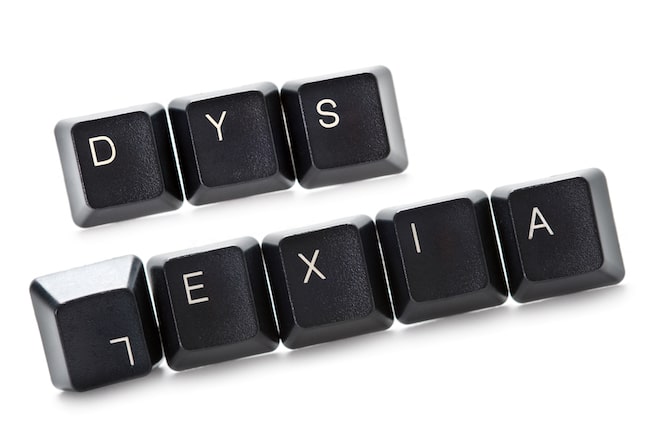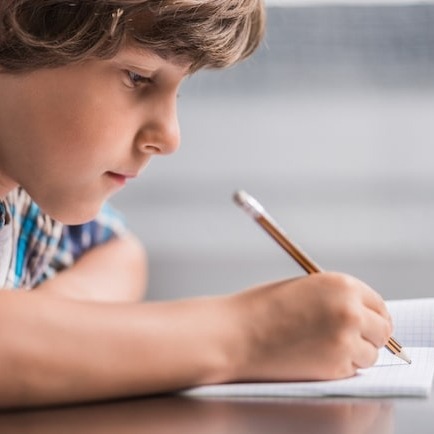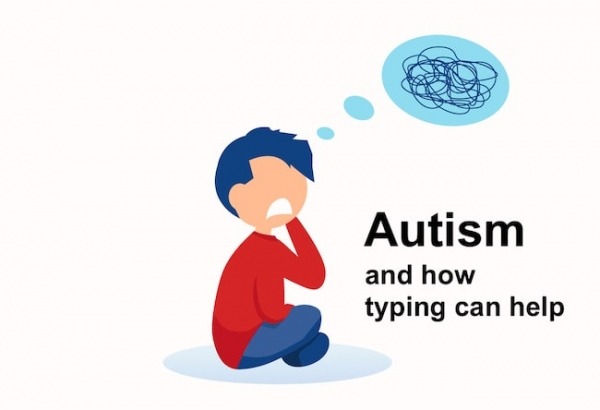Improve writing skills for kids

Writing is an activity with many moving parts. A child must bring together vocabulary, grammar and mental processing, and then rely on the physical aspect of handwriting or typing out the words.
That’s why it requires ample practice and extensive exposure to language for kids to develop strong writing skills.
And because young learners can’t just sit down and write the perfect draft, they need to learn the art of revision too.
How important are writing skills?
Writing is intricately linked to critical thinking. It also has implications for performance across all areas of the school curriculum.
Writing is how a child shows what he or she knows and what has been learned.
Students need to be good writers in order to do well on exams, complete homework assignments and eventually compose longer essays and reports.

7 Ways to help kids develop their writing skills
For students to improve their English writing skills, they need to practice as often as possible, learn how to type so they can write quickly on a computer, and be introduced to strategies that will help them develop their skills.
- Encourage reading. Good writers tend to be avid readers and there is a reason for this. The more a child reads, the more they will be exposed to new vocabulary in context and the more words they will learn. Once a word is part of their receptive vocabulary, it is a lot easier for it to make the transition into productive use (to the delight of parents and teachers who want children to “flex their vocabulary muscles” in writing). Reading also exposes kids to different ways of using words and a variety of sentence structures that they can use in their own writing.
- Help them get started. A blank page can be intimidating, even for the seasoned author. Children may do fine once they get started but you often need to help them get the first few words or sentences down. Ask them a thought provoking question, make a list or mind-map of ideas that relate to the topic they are writing about or work with them to organize an outline they can turn into a draft. Taking away the stigma of writing the perfect sentence is also key. Once they have some text to work with, it can always be re-shaped and revised. The trick is to encourage free writing from the start, in order to record whatever thoughts come to mind. They can always worry about revisions later.
-
Teach working in drafts. Brainstorming, putting ideas down on paper, ensuring the language and thoughts flow and revising for typos and errors are all different steps in the process of writing. Children need to understand that a perfect sentence doesn’t just come out of nowhere, it develops through a back and forth process as the writer writes, reviews and revises his or her text. This is one reason it’s helpful for kids to write on a computer. It saves erasing and allows children to make multiple attempts at getting their thoughts down, until they find the phrasing they want. Writing on the computer also make it more efficient to reorganize longer pieces of writing, to help information flow better.
- Ask parents to help outside of school. Kids learn to write through example. Completing an initial draft alone is sometimes important, particularly if the task requires sharing personal thoughts and experiences, but it also helps to have someone else there to review it. Parents can make a huge difference in how their children’s writing skills improve by agreeing to read early drafts. Use the child’s words to suggest optimized phrasing and/or help them pinpoint what they are trying to say through conversation. This makes it easier for the ideas to be written down.
- Allow the use of spell and grammar checks. It’s easy to dismiss technology-use as being lazy, but spelling and grammar feedback can actually be extremely helpful for a child who is learning how to write or trying to improve. This is because sometimes there are multiple suggested corrections that force a child not only to notice the awkward phrasing or misspelled word, but to spend some extra cognitive energy thinking about how to correct it. Computers also provide an opportunity to correct errors without the embarrassment or stigma of multiple eraser marks on a hand-written copy.
- Incentivize free writing at home and school. When children learn to write well they are not just cultivating academic skills, they’re also opening up a new avenue for self-expression. Creative tasks foster positive associations with writing, so children see it not just as an activity for learning and reporting information at school, but a way of getting their thoughts across. It doesn’t matter who reads what they are writing or even what it is about, it’s just a good idea if it becomes a regular activity. Parents might suggest keeping a personal diary with a journal entry a day resulting in a special treat at the end of the week. It’s also important for teachers to encourage any and every opportunity for writing, as the more kids write, the more they will improve and hone their skills.
- Suggest copying activities. Copying or memorizing favorite poems, quotes or any other pieces of written language can help children focus their attention on form, use and meaning and incorporate new structures into productive use. While no parents or teachers would advocate plagiarism, borrowing sentence structures for your own ideas is how children learn to write and improve their writing. They will lift phrasing from everything they read and you can help encourage the process by providing them with specific materials to work with.

Learning difficulties that affect writing
Dyslexia
While no two children with dyslexia will have exactly the same symptoms, the dyslexic child often struggles to cultivate reading and writing skills. If they have a hard time learning to read, vocabulary will be effected, which makes writing more difficult. Spelling can also cause interference when it comes to getting ideas on paper. This is another reason why using spell-checkers is important. Try out different teaching strategies as it’s crucial to help these kids before they fall behind in early literacy skills development.
Dysgraphia
For some children and adults, the act of handwriting is actually physically painful or can cause mental strain. Everything from forming the letters to deciding on the spacing between words requires so much cognitive energy that very little is left over for thinking about the ideas, flow, spelling and/or punctuation in an assignment. It’s almost always advised that kids who have dysgraphia learn to write on a computer using touch-typing. Learn more about helping kids who experience writing difficulties because of dysgraphia.
What else can affect writing skills?
Dyspraxia
Similar to the handwriting difficulties experienced by children with dysgraphia, dyspraxia has to do with difficulties with fine motor skills. This can make holding a pen or pencil difficult. It also affects planning and organization skills, something that’s essential for children who are learning how to write. Brainstorming ideas in charts and filling out outlines can help these kids. Read more about teaching children with dyspraxia.
Slow processing speed
Kids with slow processing speed will need longer to process writing prompts and may have a particularly hard time getting started on a draft. Parents and teachers can help by going over the task instructions several times, giving children an opportunity to talk about the topic in order to generate ideas, and then allowing them as much time as they need to write. Neatness and spelling may not always be a high priority for these kids as the assignment itself is so mentally taxing they will be exhausted when it comes time to revise. That’s why the shorter the task, the better, to help children with slow processing focus on quality in their writing.
ADHD
These children may struggle to focus attention on the prompt or see how the idea they are working on relates to the larger text. It can be helpful to give them an opportunity to get up from their seat from time to time and move around the room or stretch. Many kids are successful writing in their heads, that is working out their thoughts before sitting down to record them.
Computers and touch-typing
Kids can start learning how to type at the age of 6 or 7, when their hands fit comfortably on a keyboard. Taking a touch-typing course is a must for the child who is learning to write on a computer. That’s because the process of translating ideas into words and sentences is much smoother without the disruption of visually searching for letters.
Touch-typing speeds up writing, allowing a child to write at the same pace as he or she is thinking. It can be a great way to encourage kids to do more writing outside of school, as it takes less time to write a brief email to a relative or compose a comment on social media.
It helps children who struggle with learning difficulties too. They can avoid handwriting tasks and improve their spelling skills, as muscle memory in the hands automatizes the typing of high frequency words.

Finding the right touch-typing course is key. Touch-type Read and Spell takes a multi-sensory and modular approach that allows each child to work through the program at a pace that is right for him or her. Hearing the words, seeing them on a screen and then learning to type them also improves sound-letter mapping and can help with reading skills.
Do you have any tips to add? Join the discussion by emailing our team!
For teachers
TTRS is a program designed to support educators in teaching students touch-typing, with additional emphasis on reading and spelling.
Chris Freeman

close
Can an Orton-Gillingham approach to literacy help your child?
Take a short quiz to find out!
TTRS has a solution for you
An award-winning, multi-sensory course that teaches typing, reading and spelling

How does TTRS work?
Developed in line with language and education research
Teaches typing using a multi-sensory approach
The course is modular in design and easy to navigate
Includes school and personal interest subjects
Positive feedback and positive reinforcement
Reporting features help you monitor usage and progress














